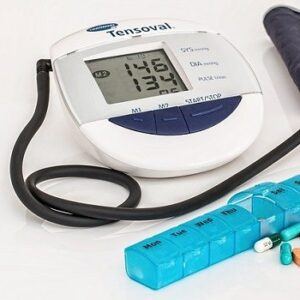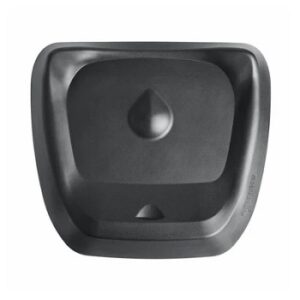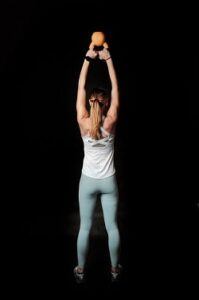 I know, I know. It sounds crazy right? Surely you don’t need to be told how to stand. It’s something most of us can do and have been doing naturally for most of our lives. But what we’re going to cover in this article is how to stand at work properly and safely when using a standing desk or desk converter.
I know, I know. It sounds crazy right? Surely you don’t need to be told how to stand. It’s something most of us can do and have been doing naturally for most of our lives. But what we’re going to cover in this article is how to stand at work properly and safely when using a standing desk or desk converter.
There’s a number of things to consider such as how to split your time between sitting and standing, what shoes to wear, whether to choose an anti-fatigue mat or balance board plus how to add a little extra activity to your day.
We’ll be covering all of these points throughout this post. But before we do, let’s take a look at some of the benefits of sitting less at work.
Benefits Of Sitting Less
(Please note I am not a doctor or fitness coach. If you have any concerns or health issues consult with your doctor. Click here for medical disclaimer.)
Blood Pressure Standing Versus Sitting
 According to the American Heart Association, “emerging strategies focusing on reducing and changing the patterns of sedentary behaviors (put simply, too much sitting) may have potential for lowering the incidence and prevalence of hypertension, as well as minimizing medication use in those already treated.”
According to the American Heart Association, “emerging strategies focusing on reducing and changing the patterns of sedentary behaviors (put simply, too much sitting) may have potential for lowering the incidence and prevalence of hypertension, as well as minimizing medication use in those already treated.”
In simple terms, this means that reducing the amount of time spent sitting, (along with taking regular exercise), may be a key factor in reducing high blood pressure. According to the AHA’s 2018 study, 46% of Americans were classified as having high blood pressure, or hypertension.
This is a pretty serious problem which can put a strain on any or all of the organs and can increase the risk of a multitude of health conditions which could potentially result in death. For further information on the study, see “Sitting Less and Moving More; Implications for Hypertension.“
Calories Burned Standing Versus Sitting
According to Healthline, “when you stand, you burn anywhere from 100 to 200 calories an hour. It all depends on your sex, age, height, and weight. Sitting, by comparison, only burns 60 to 130 calories an hour.”
So let’s go straight down the middle and say a person burns 150 calories an hour standing and 95 sitting. That equals a difference of 55 calories per hour. By splitting an 8-hour work day 50 / 50 between sitting and standing, that’s 220 extra calories burned a day, or 1100 over a 5-day week. It all adds up!
To find out more see Healthline’s full article “Do You Really Burn More Calories While Standing” where you’ll find average American female and male calorie charts along with some other useful information.
Other Plus Points
 In addition to the above, sitting less can reduce the risk of heart disease, type-2 diabetes and certain types of cancer as well as stress, depression and anxiety. Standing more and increasing activity levels can improve circulation, focus, concentration, productivity and mood.
In addition to the above, sitting less can reduce the risk of heart disease, type-2 diabetes and certain types of cancer as well as stress, depression and anxiety. Standing more and increasing activity levels can improve circulation, focus, concentration, productivity and mood.
However, you should also be aware that standing too much can bring problems of its own. (See Is A Standing Desk Good For You? to find out more.) For this reason, it’s important to follow some simple guidelines to make sure you’re not putting yourself and your health at risk.
Standing The Right Way
Alternate Between Sitting And Standing
It’s crucial to find a healthy balance between sitting and standing. As a guideline, splitting your time 50 / 50 is recommended, but this might not work for you personally. All manner of things come into play here such as age, general fitness, health issues, medication and the task at hand.
At the very least, introduce a little activity to your day for every 30 minutes of sitting. This is because your body begins to slow down after 30 minutes of little or no activity and bodily functions such as the metabolism can almost grind to a halt. Less blood pumps around your body and therefore less oxygen gets to the places it needs to be. This directly affects concentration, focus, mood, creativity and productivity.
If alternating between sitting and standing is new to you, start off small – maybe 5 minutes every half hour, and build up gently. Set yourself reminders, especially when you’re engrossed in your work. I can literally lose hours unless I set an alarm. Alternatively, opt for a standing desk that has built-in notification settings or is Bluetooth enabled to link up to a fitness app.
If the 50 / 50 sit-stand split works for you, that’s great. But even 15 minutes of standing for every half hour of sitting is a step in the right direction. You should definitely begin to see an improvement physically, mentally and psychologically within a few days.
The Best Shoes For Standing At Work
 Our poor feet! We tend to take them for granted and expect them to do their job with minimal fuss and little attention. But ignoring their needs – particularly when standing or walking for extended periods – can lead to all sorts of problems for the feet, ankles, legs, hips and even the back.
Our poor feet! We tend to take them for granted and expect them to do their job with minimal fuss and little attention. But ignoring their needs – particularly when standing or walking for extended periods – can lead to all sorts of problems for the feet, ankles, legs, hips and even the back.
Where possible, avoid wearing heels when standing for long periods at work. High heels can force the feet into an unnatural position causing inflammation, strains, fractures or breaks. Even if you’re a seasoned heel-wearer and can appear to glide on air in your 6-inchers, you could be causing irreversible long-term damage.
For example, long-term heel wearing can weaken the cartilage in your knee and ankle joints which in turn could lead to very painful arthritis.
If heels are your thing, or if flatties are a definite no-no for whatever reason, at least try to take a break on and off through the day. Have a pair of flat or more “sensible” shoes in your bag or drawer so you can have a swap around and give your feet a rest.
The best type of shoes for standing at work are those with a flat sole across the whole foot so that the weight they are supporting – i.e. your entire body weight – is spread evenly. They should also be cushioned and wide enough for your feet to spread comfortably. Too narrow and you’ll know about it!
If your working environment and boss allow it, a decent running shoe with breathable fabric is a great way of supporting and cushioning your feet, as well as avoiding many types of injury and discomfort.
Standing Mat Or Balance Board?
 Standing mats range from the most basic, slightly padded mats for gentle cushioning and minimal shock absorption to those with raised edges, lumps, bumps and nodules. The latter allow for a greater range of positioning which in turn allows for increased massaging or stretching of different parts of the feet, ankles and legs.
Standing mats range from the most basic, slightly padded mats for gentle cushioning and minimal shock absorption to those with raised edges, lumps, bumps and nodules. The latter allow for a greater range of positioning which in turn allows for increased massaging or stretching of different parts of the feet, ankles and legs.
Generally mats range from ¾ inch thickness up to around 3 inches or more. They’re easy to use and get used to, and are more suitable for those who may find the balance board a little too challenging. However, compared to balance boards, they provide less range of movement and work less muscles.
The most basic balance boards allow a little movement from side to side, so as well as changing the positioning of your feet you can also introduce a little more movement in the ankles, knees and hips. The balance intensity varies from board to board and other models allow heel-to-toe and twisting movements as well, giving you an even wider range of positions and stretches.
We would recommend opting for a balance board specifically designed for standing desk work for safety reasons. They’re great for improving balance, co-ordination and agility. These skills can in turn improve sporting performance and reduce the risk of injury – from sporting activities or everyday life.
They can, however, take a little bit of getting used to. Also be aware that they will add inches to your standing desk height requirements and usually come with a manufacturer’s recommended weight limit, so check these to make sure your board fits, and that you fit your board.
We’ll be covering standing mats and balance boards in more detail separately, so watch this space for further information and our top picks.
Daily Deskercise
 There are lots of exercises you can do at your desk – sitting or standing, with or without equipment. Check out our post Standing Exercises at Work for examples of exercises and stretches geared towards the feet, legs, butt, abdomen, arms and shoulders.
There are lots of exercises you can do at your desk – sitting or standing, with or without equipment. Check out our post Standing Exercises at Work for examples of exercises and stretches geared towards the feet, legs, butt, abdomen, arms and shoulders.
Not only will these strengthen and lengthen the muscles, they will also help to improve your posture, fight fatigue and lessen aches, pains and general discomfort if you find yourself sitting – or standing – for too long. Where possible, build them into your daily routine to keep everything moving and working as it should.
The How To Stand At Work Sum-Up
In this post we’ve looked at some of the problems which can be caused or worsened by sitting too much at work. These include :
- heart disease
- diabetes
- cancer
- stress
- depression
- anxiety.
Standing more can be beneficial in a number of physical and psychological ways including :
- lowering high blood pressure
- burning more calories
- better circulation
- improved focus, concentration and mood
- increased productivity.
But remember that standing too much can be detrimental to your health as well. The key points we covered in order to remedy this are :
- alternate between sitting and standing throughout the day
- make sure your footwear is suitable in order to avoid pains, strains and long-term damage
- use a standing mat or balance board in order to increase the range of movements in your feet, ankles, legs and hips
- build some simple exercises and stretches into your daily routine to help keep things working properly.
So now it’s over to you. We hope you found this post useful and would love to hear from you. How do you split your sitting / standing time? Do you exercise at your desk? Tell us which balance board or standing mat you would recommend. Pop a comment in the box below or contact jane@jetofficesolutions.com
